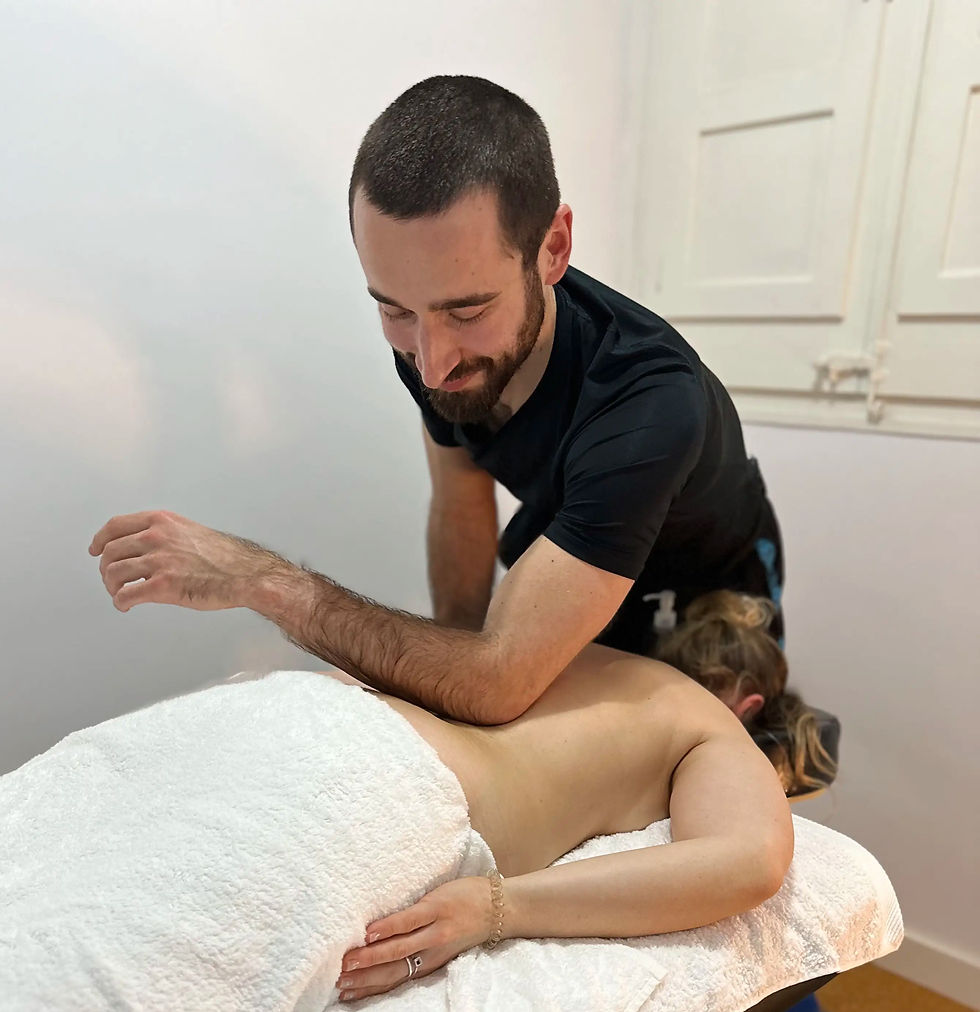Why Should You Book a Relaxing Massage?
- patrikzsebedits
- Oct 8
- 3 min read
The sad truth is that in today’s world, many of us live in a near-constant state of stress. But
what does that actually mean?
To understand, we need to talk about our Autonomic Nervous System (ANS), which has two main branches:the Sympathetic Nervous System (SNS) and the Parasympathetic Nervous System (PNS).

The Sympathetic Nervous System (SNS)
The SNS is responsible for the body’s “fight or flight” response.It helps us survive when we perceive danger — whether that danger is real or imagined. In modern life, we rarely face lions, but our bodies can react the same way to financial pressure, an argument with a partner, or an unexpected email from the boss.
When the SNS is activated:
Heart rate increases.
Blood flow shifts to the muscles and extremities — preparing you to fight or run.
The liver releases glucose into the bloodstream for quick energy.
Airways and pupils widen to increase oxygen intake and improve alertness.
Digestion slows down to conserve energy for immediate survival.
This response is essential in short bursts — for example, during exercise. But when stress becomes chronic, your body stays in a heightened state. That can mean poor digestion, tense muscles, or fatigue. Many people notice digestive changes, such as loose stools, when under long-term stress.
The Parasympathetic Nervous System (PNS)
When the PNS takes over, your body enters a “rest and digest” mode:
Heart rate and breathing slow down.
Blood flow returns to the digestive tract and reproductive organs.
Digestive enzymes and saliva increase.
Pupils constrict to support calm, focused vision.
The PNS also supports two additional vital functions: healing and reproduction.Because a large portion of our immune system is located in the digestive tract, proper digestion and nutrient absorption are key to healing and resilience.
Why This Balance Matters
If you spend too much time in a stress-activated state and not enough in a restorative one, your body may have fewer opportunities to repair and recover. Chronic stress has been linked to a variety of issues — from immune dysfunction to hormonal imbalances and fertility challenges.

How a Relaxing Massage Helps
During a relaxing massage, I use gentle, slow, and flowing strokes to calm the nervous system and stimulate a parasympathetic response. The combination of soothing touch, quiet music, and rhythmic rocking motions helps the body shift naturally into a state of rest, digestion, and healing.
By the end of a session, most clients feel deeply relaxed. Their heart rate slows, blood pressure drops, and it’s common to hear gentle sounds from the belly — a sign that the digestive system is working again.
How Often Should You Get Relaxing Massages?
In an ideal world, a weekly massage is recommended to keep your body and mind in balance. However, I understand that not everyone has the time or budget for that.A fortnightly treatment can still work wonders — helping to prevent stress and tension from building up.
Even if you can only manage a monthly massage, you’re already doing more for your health and wellbeing than most people.
To make this easier, I offer a Monthly Massage Subscription:For only €55, you’ll receive a 60-minute treatment plus a 10% discount code for any additional bookings that month. (With the discount, a 60-minute massage costs just €54.)
It’s a simple and affordable way to make relaxation — and self-care — a regular part of your life.
If you’ve never booked with me before, you can use the code FIRST10 at checkout to get €10 off any 60- or 90-minute treatment.



Comments